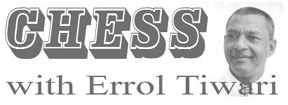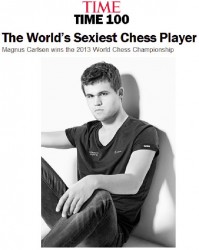Alas, it was over for Viswanathan Anand and one billion and more chess fans from India. He lost three games and drew seven to Magnus Carlsen, making the latter the undisputed chess champion of the world. Carlsen reached the magic figure of 6½ points in the best-of-12 series with two games to spare.
Writing for Time magazine (Nov 25, 2013) the irrepressible Garry Kasparov has been quoted as saying, “as I said before the match, Anand was fighting not only a stronger player but also the tidal forces of time and history. Carlsen is a force of nature whose time has come and there was little Anand could do to slow the inevitable in Chennai.” Kasparov coached Carlsen for a year in 2009. And another influential chess voice, a former world championship challenger to Kasparov, England’s Nigel Short, also expressed his view in The Indian Express: “It is hard to recall any world championship match that has been so bereft of theoretical novelties, as the young Norwegian constantly sought to sidestep Anand’s renowned preparation by going down less travelled paths. His simple philosophy was, in essence, ‘Give me an equal position that you have not studied with a computer and I will outplay you.’’’
 Some say that the Anand-Carlsen match was the biggest chess clash since the Spassky-Fischer encounter in 1972, in terms of the interest which it generated. Most of the media houses carried reports of the match, including celebrated newspapers, news magazines, television stations, radio shows and the like. Since the disappearance of Fischer following his 1972 match, there has been no Western world chess champion until now. This was perhaps why the media outlets chose to publicize details of the match in Tamil Nadu. Perhaps they sensed there could be a new world champion. Fischer did return, however, for a match against Spassky, which he won handsomely, and for which the purse totalled a glittering US$5 million, unrealized so far by other active chess players. Fischer cited himself as the world champion at the beginning of the nineties at the conclusion of the match in Yugoslavia, but no one took him seriously.
Some say that the Anand-Carlsen match was the biggest chess clash since the Spassky-Fischer encounter in 1972, in terms of the interest which it generated. Most of the media houses carried reports of the match, including celebrated newspapers, news magazines, television stations, radio shows and the like. Since the disappearance of Fischer following his 1972 match, there has been no Western world chess champion until now. This was perhaps why the media outlets chose to publicize details of the match in Tamil Nadu. Perhaps they sensed there could be a new world champion. Fischer did return, however, for a match against Spassky, which he won handsomely, and for which the purse totalled a glittering US$5 million, unrealized so far by other active chess players. Fischer cited himself as the world champion at the beginning of the nineties at the conclusion of the match in Yugoslavia, but no one took him seriously.
Carlsen’s toughest rivals who play chess currently are Vladimir Kramnik of Russia and Levon Aronian of Armenia. You would recall that Kramnik was defeated by Carlsen on the tie-break system at the Candidates tournament in London in March of this year, and thereby secured the right to face Anand. And perhaps Fabio Caruana of Italy. And still, I believe, we haven’t heard the last of Anand as yet. He is earmarked to play in the Candidates tournament next year. The line-up for that tournament promises to be awesome, matching some of the fabled tournaments of yesteryear.
Carlsen, the poster-boy for chess, has been named as one of Time magazine’s 100 most influential people. Writing for Time, Kasparov emphasized that Carlsen is “charismatic and independent as he is talented. If he can rekindle the world’s fascination with the royal game, we will soon be living in the Carlsen era.’’


India has succumbed. Its mighty warrior was plucked from the pinnacle of world chess. But people should remember that Anand inspired an entire generation of chess players. There are more chess players in India than ever before. No more is India a mediocre chess-playing nation, and Anand should be heartened by this devlopment. In total, India boasts some 38 grandmasters in addition to numbers of other titled players. Given the strength and depth of Indian chess, it is only a matter of time before a person of consequence rises again from the land where the royal game was created. It would be fitting for someone to make Anand proud again.








